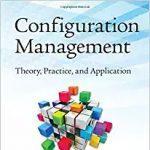Configuration Management: Mastering Branching and Merging
Configuration management plays a key role in product development, including software development. Knowledge of branching and merging are fundamental practices that allow teams to work on multiple features, bug fixes, or experiments simultaneously without interfering with the main codebase. Understanding how to manage branches and merge changes effectively is crucial for maintaining code quality and ensuring a smooth development process.
What is Branching and Merging?
Branching involves creating a separate copy of the codebase, often called a “branch,” which allows developers to work on new features or changes in isolation from the main codebase, often referred to as the “main” or “master” branch. Merging integrates these changes back into the main branch once the work on a feature or fix is complete and thoroughly tested.
Branching enables multiple developers or teams to work on different parts of a project concurrently. This is particularly useful when developing new features, fixing bugs, or experimenting with new ideas, as it prevents unstable or incomplete code from affecting the main branch. Once the work on a branch is complete and verified, the changes can be merged back into the main branch, ensuring that the new functionality is integrated smoothly with the existing codebase.
The Need for Branching and Merging
The primary need for branching and merging in configuration management arises from the complexity of modern software development. With multiple developers working on a single project, it’s essential to have a system that allows parallel development without conflicts. Branching enable each developer to work on their tasks independently while merging ensures that all changes are eventually integrated into a cohesive product.
Another critical need is maintaining code stability. By using branches, unstable code can be isolated from the main branch, reducing the risk of introducing bugs into the production environment. This also allows for continuous integration and testing, where changes can be tested in isolation before being merged.
Difficulties with Branching and Merging
Despite its benefits, branching and merging come with several challenges. One of the most significant difficulties is merge conflicts. When multiple developers make changes to the same part of the code in different branches, merging can result in conflicts that must be resolved manually. This process can be time-consuming and error-prone, especially in large codebases.
Another challenge is branch management. As the number of branches grows, keeping track of them and ensuring they are regularly updated with changes from the main branch can become challenging. Failure to do so can lead to integration issues and technical debt, where outdated branches require significant effort to merge later.
Additionally, the complexity of the merging process can increase with the number of changes and the time a branch has been isolated from the main branch. The longer a branch is maintained separately, the more likely significant changes will occur in the main branch, making the merge process more complex and risky.
Conclusion
Mastering branching and merging is essential for effective configuration management in software development. While these practices allow for parallel development and help maintain code stability, they also require careful management to avoid conflicts and integration issues. By understanding the needs and challenges of branching and merging, development teams can better manage their codebases and deliver high-quality software more efficiently.
For more information, contact us
Follow us on social media at:
Amazon Author Central https://www.amazon.com/-/e/B002A56N5E
LinkedIn:


